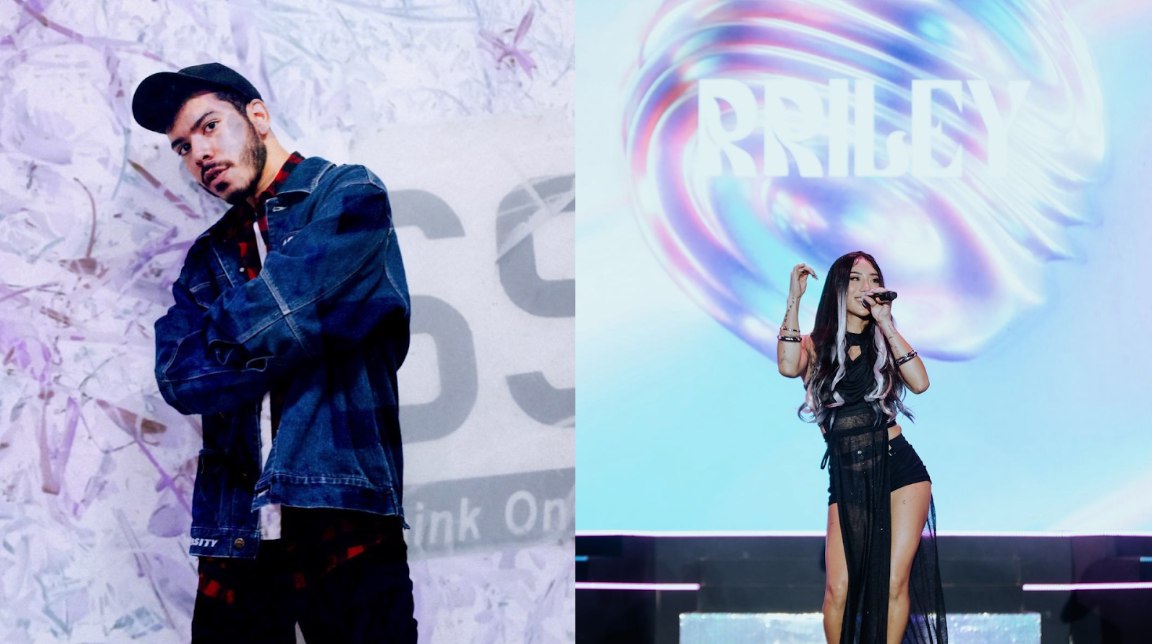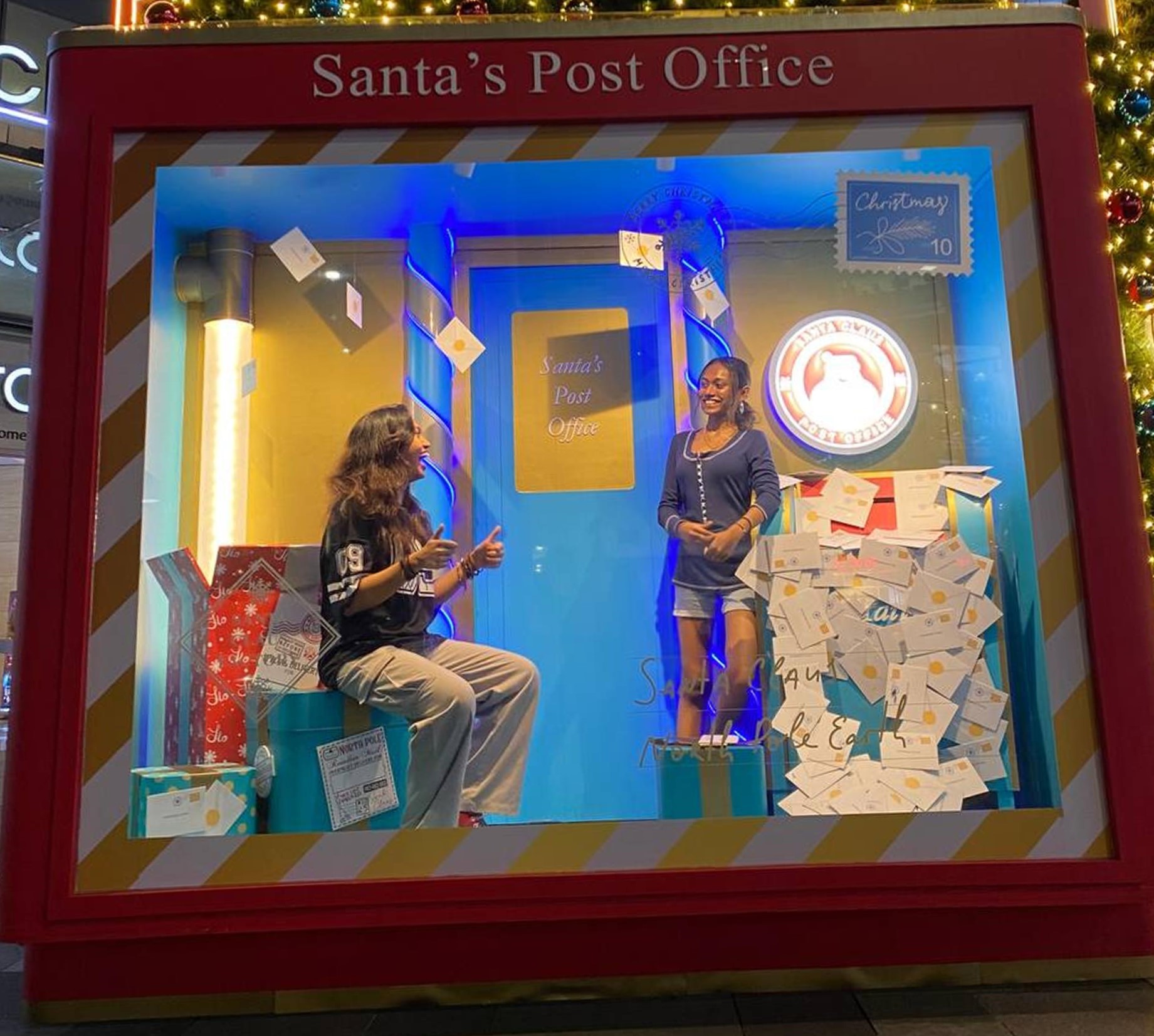When omarKENOBI first tried to record his music, he didn’t have a studio—he didn’t even have a microphone. Fast forward a few years, and he’s performing at major festivals like Laneway and Neon Lights. Across town, RRILEY, a member of the popular band The Sam Willows, grappled with self-doubt, wondering if she could make it as a solo artist. But with the release of her debut single Burn, she ignited a fire that spread rapidly, earning her overwhelming support and recognition. Their journeys might seem improbable, but they are the reality of Singapore’s rapidly evolving music scene—a testament to the power of perseverance and passion.
Meet the Artistes: omarKENOBI and RRILEY
omarKENOBI (Omar Amir): New and upcoming rapper Omar Amir, known by his stage name omarKENOBI, has been sharpening his skills on the microphone ever since he was a child. The Singaporean rapper, voiceover artist, and producer has blown audiences away with his unique vocality and music production prowess. Making his debut as part of the three-man hip-hop group Mediocre Haircut Crew (MHC), omarKENOBI has also continued his journey as an independent artist, collaborating with notable names such as Sam Rui, Khally, Fauxe, and Charlie Lim.
omarKENOBI’s first-ever release was Kalah, a combined effort by him and fellow rapper Fariz Jabba, which has amassed over 6 million streams on Spotify and YouTube. Alongside his music, omarKENOBI has also taken on the role of Hip Hop DJ at Singapore’s flagship indie radio station, Mediacorp’s Indiego, contributing to the growth of the local music community.

RRILEY (Sandra Riley Tang): Sandra Riley Tang, known mononymously as RRILEY, is a Singaporean artist who made her debut in the industry back in 2012 as a founding member of the local pop quartet The Sam Willows. In 2019, she released her debut solo single Burn, flaunting her various musical influences and quickly taking over the airwaves. She followed up with the anthemic mmm bye and the unconventional love song Love Me Like A, asserting herself as a voice of self-love and confidence for her listeners.

RRILEY released her highly anticipated debut EP Alpha, in August 2020, a fiery ode to independence mixing playful lyrics with unapologetic swagger and thumping power-pop beats. In 2021, she released the catchy R&B-Pop single You Should Have Said So and followed it up with growing pains in 2022, showcasing her more vulnerable and introspective side.
The Birth of Local Sounds: A Journey Begins
Singapore’s music scene is a tapestry woven with threads of resilience, creativity, and a relentless drive to be heard. From the soulful rhythms of the 1950s to the electrifying beats of today, the journey of Singapore’s music industry is as dynamic and diverse as the city-state itself.
Much like the rest of the world, music is ever-changing, influenced by trends, time, personalities, etc, yet somehow remains the one thing in the world that can bring people together no matter where they are. Music serves as an important cultural marker for many countries with rich history, and Singapore is no exception.
Singapore’s music scene has undergone a remarkable transformation over the decades, evolving from the early days of rock ‘n’ roll in the 1950s to the vibrant and diverse landscape we see today. Each era has contributed to shaping the unique sound that resonates in the heart of Singapore’s music culture.
In the 1950s, Radio Malaya’s Talentime competition sparked a wave of local talent, setting the stage for what was to come. The 1960s saw the rise of iconic bands like The Crescendos and The Quests, who not only topped local charts but also made waves internationally, defining what would become the golden era of Singaporean music.
The 1970s were a period of change and challenge, with political and social shifts leading to a decline in the local music scene. However, by the 1980s, a resurgence was underway, highlighted by Tokyo Square’s surprise hit Within You’ll Remain and a renewed DIY spirit that paved the way for the indie revolution of the 1990s. Bands like The Oddfellows took control of their music production, distribution, and promotion, leading to a new wave of self-expression and experimentation in Singaporean music.
The 2000s and Beyond: A New Era of Possibilities
As Singapore entered the new millennium, the music scene began to evolve in new and unexpected ways. The rise of digital media and social platforms like YouTube and Spotify allowed local artistes to reach global audiences without needing the backing of major labels. The government’s increased support for the arts, through grants and initiatives like the Noise Singapore platform, provided emerging artistes with the resources and exposure they needed to succeed.
“I never had a place to record, so I used to rely on producers,” omarKENOBI recalls a hint of nostalgia in his voice. “But I took it upon myself to learn how to produce, and since then, I’ve been completely independent.” His words resonate deeply in a city where the music scene has often felt fragmented and under-supported.
Artistes like RRILEY and OmarKENOBI represent the future of Singapore’s music scene—a future where genre boundaries are blurred, and the focus is on authenticity and innovation. RRILEY, with her introspective lyrics and powerful performances, and OmarKENOBI, with his unique blend of local flavour and international appeal, are not just contributing to the scene—they are shaping its future.
How the Rapid Diffusion of Technology Plays a Part
Amongst the many factors contributing to the growth of music scenes worldwide, one constant is undoubtedly the advancement of technology and the rise of social media. While new sound production technology heavily improves the quality of music, the use of social media and the potential virality that comes with it allows for that music to be easily shared and listened to from anywhere, allowing virtually everyone to be exposed to your music.
Something that both RRILEY and omarKENOBI can agree on is that the music production independence that social media grants makes it easier to pursue a musical career – you can now do it all on your phone. Reflecting on this, RRILEY shared, “It’s great to hear more local music on the radio and see it featured on social media. It’s truly satisfying to know that more people are including local music in their playlists.”
However, with all good things comes a conundrum that RRILEY pointed out: “Because it’s easier for everyone, the space has become more saturated, which makes it even more challenging to stand out,” adding that “while it’s an exciting time to be a musician in Singapore, it requires creativity and persistence.” It might be easier to produce and share your music now, but the hook is that you in turn have to create more unique music that can help you to stand out from your many competitors.
omarKENOBI echoes this sentiment: “Singapore’s music scene has definitely grown very significantly because of the upwards tick of social media and how so many artistes nowadays do not need to rely on labels anymore. It can all be done on the phone now.”
The Future: Where Do We Go from Here?
As Singapore approaches the end of its 50s, our music scene is poised for an exciting new chapter. The story of Singapore’s music scene is still being written. Today, we see a thriving community of musicians, producers, and fans who are passionate about local music. With increasing support from both the public and private sectors, Singaporean music is set to make an even bigger impact on the global stage.
Going forward, RRILEY’s advice to aspiring musicians in Singapore is “to not be afraid to pursue what you love,” adding on to not be afraid of taking the less travelled road, even if no one has done it before.
In the words of Plain Sunset, “May our ceiling be your floor.” The future of Singapore’s music scene looks promising, and with the talent and dedication of local artistes, it is bound to reach new heights.
P.S. RRILEY has thoughts to start a girl group, anyone interested?





